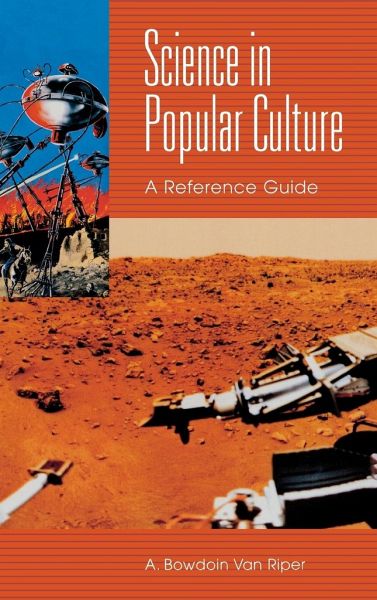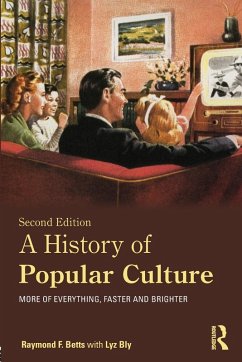
Science in Popular Culture
A Reference Guide
Versandkostenfrei!
Versandfertig in 1-2 Wochen
77,99 €
inkl. MwSt.

PAYBACK Punkte
39 °P sammeln!
Spaceships travel through time at lightspeed, piloted by human clones and talking animals. Serious injuries are healed with the wave of a medical gizmo. The media makes it all look easy. Can scientists hope to accomplish such amazing feats in the real world, or are they merely flights of fancy? This book is a fun look at what can, and can't, be achieved with current technology in today's laboratory experiments. Fans of the Jetsons, Star Trek, and Star Wars will learn the facts behind the fiction through entires that describe the scientific inventions and procedures on the screen, and how they ...
Spaceships travel through time at lightspeed, piloted by human clones and talking animals. Serious injuries are healed with the wave of a medical gizmo. The media makes it all look easy. Can scientists hope to accomplish such amazing feats in the real world, or are they merely flights of fancy? This book is a fun look at what can, and can't, be achieved with current technology in today's laboratory experiments. Fans of the Jetsons, Star Trek, and Star Wars will learn the facts behind the fiction through entires that describe the scientific inventions and procedures on the screen, and how they differ from the reality. Van Riper shows us who innovators like Charles Darwin, Benjamin Franklin, and Isaac Newton really were before they were mythologized. He discusses how animals such as chimpanzees, dolphins, and elephants are portrayed in books and films, and what we really know about animal intelligence. This book lifts the curtain on science fiction, revealing how and where scientific laws have been discarded for the sake of a good plot.







![The Seven Follies of Science [2nd ed.];A popular account of the most famous scientific impossibilities and the attempts which have been made to solve them. To which is added a small budget of interesting paradoxes, illusions, and marvels Cover The Seven Follies of Science [2nd ed.];A popular account of the most famous scientific impossibilities and the attempts which have been made to solve them. To which is added a small budget of interesting paradoxes, illusions, and marvels](https://bilder.buecher.de/produkte/69/69489/69489635n.jpg)






